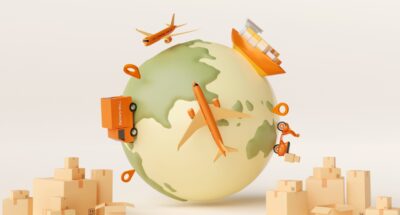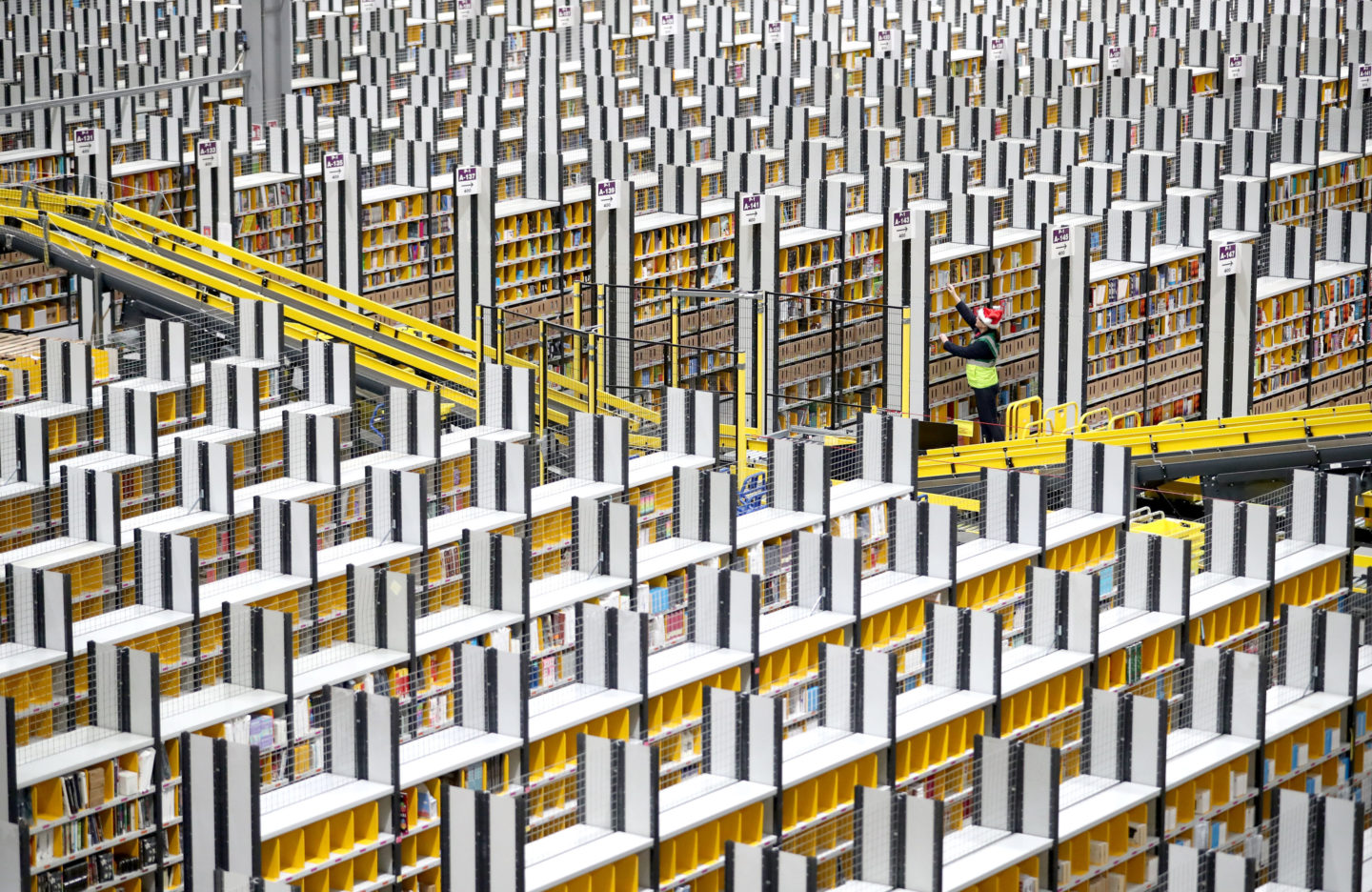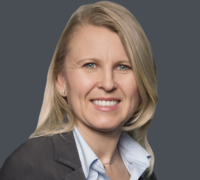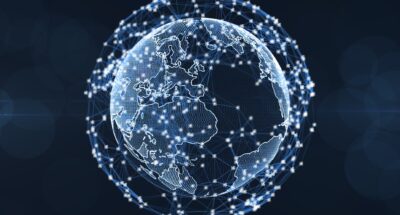
The challenges of using true demand through the supply chain
Looking at previous customer purchase data might seem like an obvious source of information upon which to base your forecasts. But it’s not quite as straightforward as you’d think ...

by Natalia Olynec Published 25 March 2021 in Sustainability • 6 min read
The COVID pandemic disrupted supply chains, business models and millions of livelihoods. That shock reinforced the view that a long-term approach, centered around environmental, social and governance principles, is increasingly important for a sustainable future.
Business executives, policymakers and investors are paying heed to both the risks and, increasingly, the opportunities connected to the social and environmental impact of business.
New regulations, particularly in Europe, require that companies demonstrate their impact on society. In parallel, global government and business leaders will accelerate action towards the goals of the Paris Agreement and the UN Framework Convention on Climate Change at the United Nations Climate Change Conference COP 26 in November in Glasgow. Firms are making bold moves pivoting their businesses to more sustainable products and services, such as GM’s commitment to shift entirely to zero-emissions car models by 2035. Investors are rewarding this shift as inflows to funds screened for Environmental, Social, and Governance (ESG) factors outpaced traditional fund returns in 2020, according to Morgan Stanley.
On the cusp of accelerating sustainable business transformation during the Decade of Action on the UN Sustainable Development Goals, I asked my colleagues at IMD to identify key trends that will drive sustainable business in 2021 and beyond.
Knut Haanaes, Professor of Strategy and Lundin Chair of Sustainability
The circular economy is a beautiful idea, first made concrete by Ellen MacArthur. How do we build economic systems that eliminate waste, regenerate, and use all resources, including energy and materials, to their fullest? The trend is strong, but still at an early stage. We are learning, applying the idea of circularity across industries, and seeing successful examples.
The US clothing company Patagonia says: “Put it in the mail, not in the landfill.” Please don’t throw away clothes; fix them, reuse them, and give them away to others or eventually find new applications. That is circularity.
The Belgian materials company Umicore has a similar position on metals. Instead of mining, let’s recycle. The company has gone from mining to “urban mining.” Take the example of a mobile phone. Umicore will recycle the whole device, handset, and battery. Circularity is the approach the company takes on every material it handles. These kinds of examples point to the future, but there is still a very long way to go.
Carlos Cardon, Professor of Strategy and Supply Chain Management
How is the massive change to omnichannel affecting sustainability? How can we be where the consumer wants our products, at the time she/he wants our products, while increasing the sustainability of our value chain? An emerging response is to become more regional and less global, making the supply chain shorter, more sustainable, more resilient and with a better impact on the regional and local economy.
Another answer down the chain is to move from big distribution centers to what is called “micro-fulfillment” or micro warehouses, which are more sustainable and closer to the consumer.
Finally, an unexpected development is that the big waves on changing consumer trends are creating lack of stock, but also massive stock piles of produce with low demand. The challenge is how to adapt our supply chains to those massive waves avoiding over stock, and as a consequence, wasted products.
Vanina Farber, Professor of Social Innovation and elea Chair for Social Innovation
The EU Sustainable Finance Disclosure Regulation (SFDR) is a set of EU rules that encourages investors and corporations to reflect on both the positive and adverse impacts of their activities. The first phases of the regulation went into effect on 10 March and focus on pre-defined metrics to assess the environmental, social and governance (ESG) outcomes of the investment process. As the name suggests, more emphasis will be placed on disclosure, including new rules that must identify any harmful impact made by investee companies. This will require both investors and firms to consider how to measure their sustainability, how to explain it and ultimately to understand how they can build a theory of change around positive impact.
The next step will see collaboration between financial sector and corporate leaders to apply ESG-verifiable data assets to leverage new opportunities and finance the transition to more just, inclusive and sustainable business models.
Michael Wade, Professor of Innovation and Strategy and Cisco Chair in Digital Business Transformation
When it comes to digital, ‘sustainability’ is unfortunately a misleading term. Most sustainability departments within organizations pay little attention to the digital world. Yet, when it comes to the broader focus on ‘responsible’ practices, digital plays a central role. Cyber-security, AI ethics, digital diversity and inclusion, respect for personal privacy, and the equitable sharing of digital economic value all fall under the topic of responsible practices. We refer to this combination as Corporate Digital Responsibility (CDR).
A large chasm has opened up between digital responsibility ‘principles’ and the ‘practices’ required to implement them. A few forward-looking companies, like Mastercard, are building process and governance to manage CDR effectively. However, most organizations are far behind. This year we will see an increased focus on CDR as digitization becomes more embedded in corporate activities. We will see an important shift from ‘responsibility as compliance’ to ‘responsibility as a source of competitive differentiation’.
Karl Schmedders, Professor of Finance
In January 2021, the new U.S. administration revived a specific tool—the “social cost of greenhouse gases”—into the decision-making progress of the U.S. federal government. This cost figure combines climate science and economics to help government agencies and the public to understand the benefits of reducing greenhouse gas emissions. The metric estimates, in dollars, the long-term damage done by one ton of greenhouse gas emissions. This estimate will not only influence the US government’s purchases, policies on pollution controls, and investments in highways and pipelines, but it will also affect international carbon markets and serve as a benchmark for internal carbon pricing schemes in private industry.
Companies such as Microsoft, which currently uses an internal carbon price of $15, will sooner or later have to use significantly higher carbon prices. The corporate finance function must plan for rising carbon costs in its evaluation of net present values or internal rates of returns for the evaluation of new investments. Internal carbon prices will have dramatic effects on the cost-effectiveness of many companies’ supply chains. We will see a strong push towards local sourcing in the coming years.
Peter Vogel, Professor of Family Business and Entrepreneurship and Debiopharm Chair for Family Philanthropy
We tend to believe that owners of businesses can make changes in a more agile way than publicly listed companies. In addition, we are witnessing the largest transfer of wealth (and control of businesses) in the history of humankind. The next generation in charge seems to have a strong intrinsic desire to make a difference – in their businesses, their investment activities and as entrepreneurs.
However, while sustainability has been part of discussions in the family business space for decades, a broad-base transformation is not yet evident. Given that roughly 2/3 of all businesses in the world are family-controlled, we need large-scale adoption of a sustainability mindset to make a difference.
Publicly listed companies, with outside shareholder pressure, will be forced to transform a lot faster than fully privately owned organizations. New CEOs of public companies have more freedom to shift strategy. In a traditional family business, the old CEO tends to “retire” to become chairman. While on paper that means stepping down from day-to-day responsibilities, it often means “business as usual.”. Hence, family businesses are running at risk of falling behind.
Susan Goldsworthy, Professor of Leadership and Organizational Change
In 2018, 25 youngsters, ranging in age from 7 to 26, supported by human rights organization Dejusticia, sued the Colombian government for their right to a safe environment, focusing on the rights of the Amazon forest itself. The Colombian supreme court granted personhood to the portion of the rainforest within Colombian borders, giving it rights under law.
Rivers in New Zealand and India have also been afforded personhood rights. In 2008, Ecuador became the first country to recognize Rights of Nature in its constitution, within which is a chapter that acknowledges nature in all its life forms as having the right to exist, persist, maintain and regenerate its vital cycles.
Since the 19th century, we have afforded personhood to corporations to confer certain legal rights and protections. Given our ecological challenges, it makes logical sense to extend personhood rights to living systems that are vital for our long-term wellbeing. Working together, corporations and governments have the opportunity and responsibility to accelerate the protection of nature to support the attainment of the UN SDGs. The time to act is now.

Chief Sustainability Officer at IMD
Natalia is the Chief Sustainability Officer at IMD. She designs and implements sustainability strategy, develops executive education programs and advisory, publishes research, builds cross-sector partnerships, and communicates IMD’s ambitions and progress. The Center for Sustainable and Inclusive Business, co-led by Olynec, aims to support leaders and companies to take steps towards a more sustainable and inclusive business world by harnessing IMD’s knowledge and expertise in the area and offering tools to help them deliver systemic, innovative, and impactful responses.

3 April 2024 • by Ralf W. Seifert, Richard Markoff in Supply chain
Looking at previous customer purchase data might seem like an obvious source of information upon which to base your forecasts. But it’s not quite as straightforward as you’d think ...

28 March 2024 • by Carlos Cordon in Supply chain
Organizations are facing increasingly demanding challenges, from soaring materials costs to new geopolitical risks and perpetual supply chain instability. New international rules add to the pressure, requiring companies to manage the Scope...

14 March 2024 • by Ralf W. Seifert, Alberto Fabregat, Srinath Goud Vanga in Supply chain
How can businesses employ large language models in supply chain management? ...

31 January 2024 • by Carlos Cordon in Supply chain
After several years of unprecedented disruption, will 2024 be any easier for supply chain leaders? Almost certainly not....
Explore first person business intelligence from top minds curated for a global executive audience